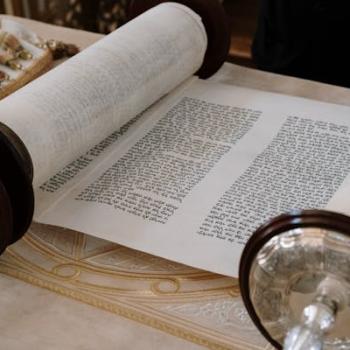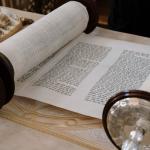
THE RELIGION GUY’S ANSWER:
A controversial new law in Louisiana requires all public school classrooms – from kindergartens through universities – to display the Ten Commandments. That defies a 1980 U.S. Supreme Court ruling against posting this revered biblical text from 3,000-plus years ago. Similar bills have been proposed in other states, and Oklahoma’s education chief just mandated school Bible instruction that specifically includes the Commandments.
Nine Louisiana families immediately filed a federal lawsuit protesting that displays violate the Constitution’s ban on “establishment of religion” by government. Some Christians and many Jews oppose government-sponsored religious displays and want strict “separation of church and state,” alongside adherents of other world religions, the non-religious, and the anti-religious.
Years ago, prominent scholar Douglas Laycock at the University of Virginia filed a brief objecting that with such displays government “desacralizes sacred texts, distorting and undermining the text’s religious meaning in its effort to demonstrate secular meanings.” Jews are offended when summarized language on displays omits the preamble about liberation from “bondage” in Egypt.
The plaintiffs also note that Louisiana uses a Protestant text rather than Catholic or Jewish renditions. But the central complaint is that the Commandments are profoundly religious. Yes, they cover honor for parents, homicide, adultery, theft, lying, and envy toward a neighbor’s wife or possessions. But the emphatic opening words command worship and respect toward the one true God and denounce pagan idolatry
Nominal acknowledgment
Many Americans believe it’s proper, and perhaps helpful, for schools and other public locales to acknowledge, at least nominally, the Commandments and Bible within the nation’s legal and cultural heritage. Michael Sean Winters, writing in the liberal National Catholic Reporter, said “the republic can withstand, and might even benefit from, calling more attention to the role the Ten Commandments played in the development of Western civilization generally and American self-identity in particular.”
Scholars speak of non-sectarian acknowledgments as “civil religion” or “ceremonial deism.” The Declaration of Independence, commemorated this past week, evokes “Nature’s God,” human rights endowed by the “Creator,” and revolutionaries relying upon “the Supreme Judge of the world” and “the protection of divine Providence.” The Commandments are depicted at the U.S. Supreme Court building, U.S. House chamber, Library of Congress, National Archives, Department of Justice, and Washington’s federal court building.
Before two key Supreme Court rulings in 2005 (see below), Pew Research polling showed 72% of Americans deemed government displays “proper,” while Gallup found 77% support. In 2005, pro-display briefs were filed by 24 of the 50 states (Alabama, Arizona, Arkansas, Florida, Idaho, Illinois, Indiana, Kansas, Kentucky, Louisiana, Minnesota, Mississippi, Missouri, North Dakota, Ohio, Oklahoma, Pennsylvania, South Carolina, South Dakota, Texas, Utah, Virginia, Wisconsin, Wyoming).
Some history
In 1971, the U.S. Supreme Court’s Lemon decision said to be legal government actions must pass three tests: have a “secular” purpose, neither advance nor inhibit religion, and avoid “excessive” state entanglement with religion. Over subsequent decades, the Court often avoided this test and applied other theories.
In the 1950s a secular men’s lodge, the Fraternal Order of Eagles, began donating stone Commandments monuments for public display, hoping to help juveniles become law-abiding citizens. By the mid-1980s there were reportedly up to 200 displays around the nation.
In the first constitutional challenge, the Anderson case, Utah’s federal district court outlawed a five-foot Commandments monolith at the Salt Lake City courthouse. But in 1973, the 10th Circuit appeals court decided this display passed the Lemon tests as “passive,” “primarily secular,” without “compulsion,” and showing government “neutrality.”
Then came the 1980 Stone v. Graham decision, now challenged by Louisiana’s law, as the Supreme Court outlawed Kentucky’s mandatory public school Commandments displays. More on Stone below.
In 2001, Alabama’s Chief Justice Roy Moore installed a large granite Commandments carving at the state Supreme Court. In 2003, the U.S. Supreme Court declined to review a federal appeals court decision outlawing the monument. A special tribunal expelled Moore from office for ignoring a federal court order to remove his display.
Two rulings the same day
In 2005, the U.S. Supreme Court outlawed Commandments displays in Kentucky courtrooms in the McCreary County decision, yet the same day its Van Orden decision allowed the Eagles monument at the Texas Capitol grounds, among items conveying the “people, ideals and events that compose Texas identity.”
Both decisions were by 5-4, with multiple opinions. Justice Stephen Breyer opposed courtroom displays but favored the Texas monument, saying “the Establishment Clause does not compel the government to purge from the public sphere all that in any way partakes of the religious. Such absolutism is not only inconsistent with our national traditions but would also tend to promote the kind of social conflict the Establishment Clause seeks to avoid.”
Neither the Texas nor the Kentucky display required anyone to heed or read the words or do anything else. For Breyer, the Texas site “suggests little or nothing of the sacred.” Texas acted “primarily to reflect, historically, the secular impact of a religiously inspired document” and thus serve “a mixed but primarily nonreligious purpose” reflecting “a cultural heritage.” But Breyer said Kentucky’s legislative history showed an intent to promote religion.
To respond to the above headline, what might the Supreme Court do if it reviews the Louisiana dispute? Its Stone decision was by a narrow 5-4 vote. The justices simply applied the recent Lemon tests in an unusual unsigned order without the briefs and oral argument that are customary with substantive church-and-state disputes. A thorough examination this time might reach different conclusions. And the current Supreme Court is generally more accommodating toward religious interests than the justices of 44 years ago.
Incidentally, it’s not surprising that U.S. Islam has not organized against displays of the Jewish and Christian Commandments. The faith believes the Bible became corrupted so God later provided the Quran to be authoritative Scripture. But the Quran teaches that God revealed his law to Moses (2:83-84, 7:143-145). The fiqh (jurisprudence) feature at IslamOnline.net states that the Quran affirms each tenet of the Commandments except for Judaism’s Sabbath observance, although not as a single unit.










